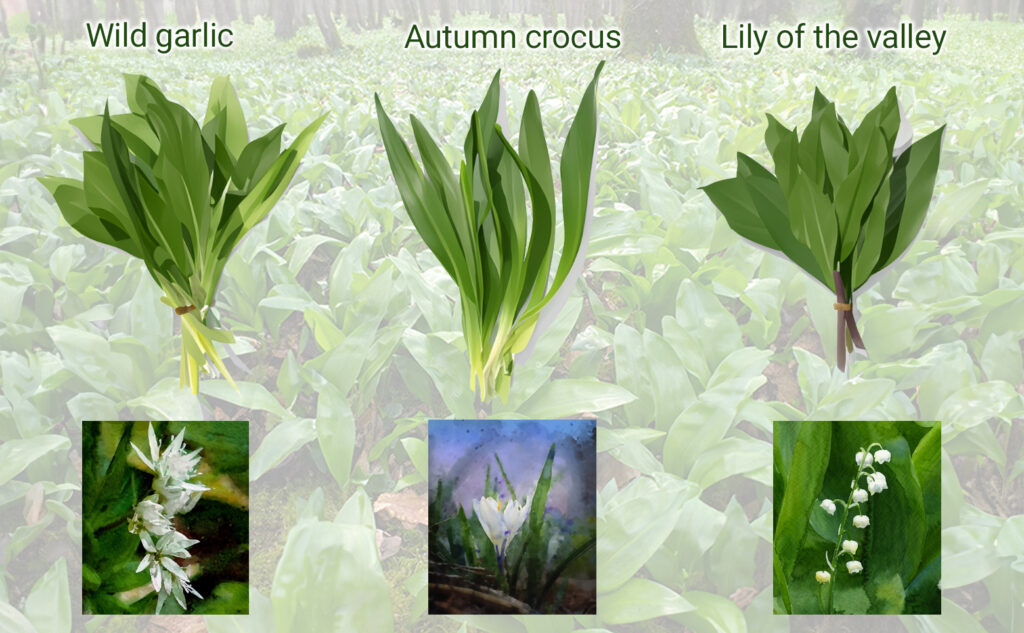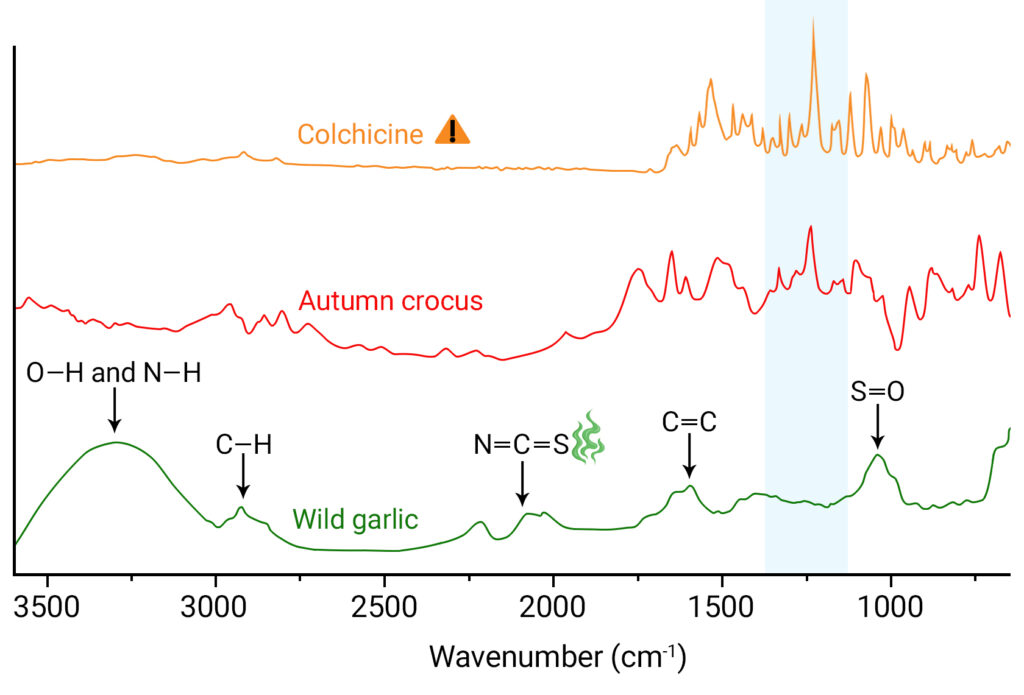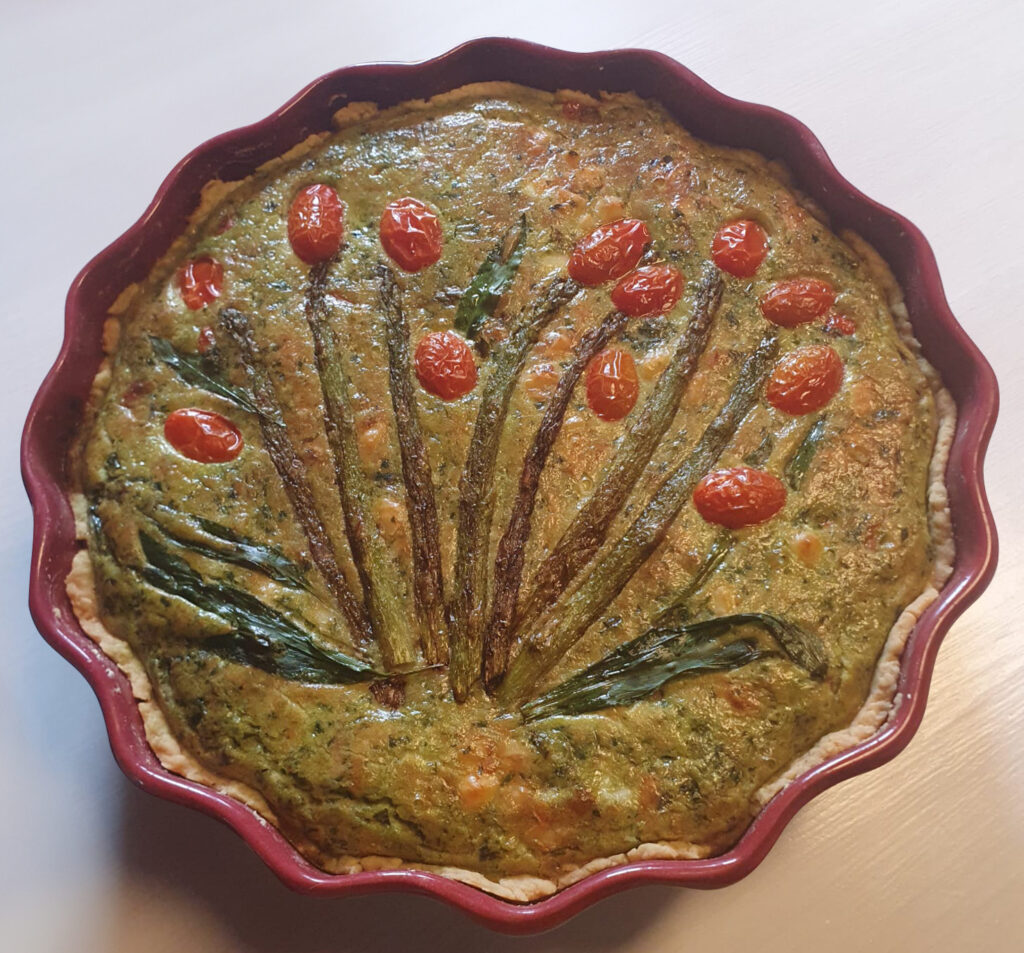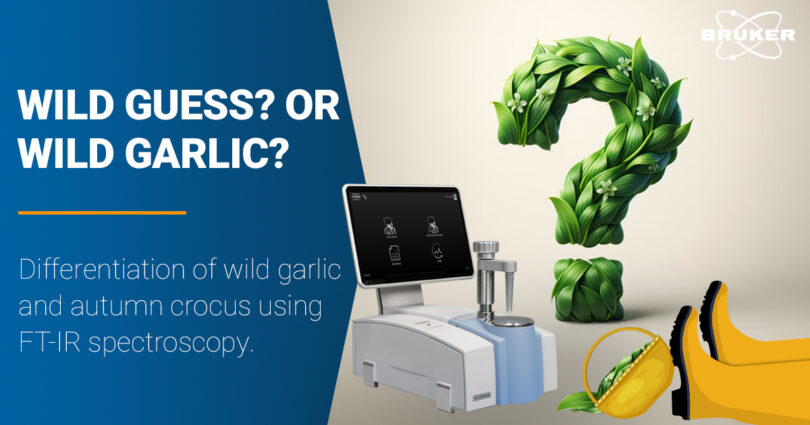Distinguishing Wild garlic & Autumn crocus with FTIR reveals distinct spectral characteristics, aiding in their differentiation. This method demonstrates the potential for spectroscopic analysis in identifying and differentiating botanical specimens.
Once again, there’s a strong but familiar odor in the forests of Germany. To most people’s delight, wild garlic season has started. Now hordes of „nature lovers“ are now plowing through the forest, ripping everything out of the ground that smells, is green, and has leaves.
The plan is simple: “delight” friends and relatives with homemade wild garlic dishes, e.g. pesto! Every year, however, there are serious, sometimes even fatal cases of food poisoning.
This is caused by the confusing wild garlic with similar specimen like Lily of the valley or Autumn crocus, both of which are highly poisonous.

As I am a passionate wild garlic picker, I wanted to know if it is possible to distinguish wild garlic from its evil twins using FTIR spectroscopy. Did it work? Let’s find out!
ALPHA II: herbalist edition
For this we collected Wild garlic and Autumn crocus. The leaves were dried and then ground into powders. Next, we used the ALPHA II FTIR spectrometer in ATR mode to measure these powders and subsequently compared the spectra. What was the outcome?

Sulfur dioxide (S=O) groups between 1050-1300 cm-1 indicate the presence of organosulfur compounds. These constituents are characteristic of Wild garlic and contribute to its aroma and flavor. Peaks corresponding to carbon-carbon double bonds (C=C) around 1600-1680 cm-1 are also prominent. They reflect the presence of various organic compounds such as alkenes and possibly phytochemicals like allicin, known for their health benefits.
Furthermore, the spectrum reveals peaks associated with nitrogen-containing functional groups, notably the isothiocyanate (N=C=S) group between 2100-2250 cm-1. This group is typical in plants belonging to the Allium genus, including Wild garlic. These compounds contribute to the pungency of wild garlic.
The spectrum also displays peaks related to hydrocarbon chains (C-H), indicating the presence of fatty acids or other lipid components. Additionally, peaks attributed to hydroxyl (O-H) at 3200-3600 cm-1 and amino (N-H) groups at 3300-3500 cm-1 suggest the presence of carbohydrates, proteins, and possibly other nitrogenous compounds.

The spectrum of Autumn crocus has certain similarities with the Wild garlic spectrum. However two important differences are apparent. While Autumn crocus lacks organosulfur components or the isothiocyanate group it contains the chemical compound colchicine. This alkaloid is what makes the autumn crocus so poisonous. Thankfully, this substance is not found in wild garlic.
Conclusion
Wild garlic is a tasty and health treat in springtime. By analyzing dried powder of the two plants by FTIR spectroscopy we were able to show clear differences in their spectra. For home use, however, this method is not as practical. If you want to make sure that your wild garlic bouquet consists only of wild garlic, it’s best to attend a wild herb course. Afterwards, when you come home with a full basket of wild garlic, why not try out my pesto recipe? It really is delicious.
Recipe for wild garlic pesto
- 200g Wild garlic
- 25g Walnuts
- 25g Parmesan cheese
- 1 teaspoon of salt
- 150-250ml Olive oil
To prepare pesto, begin by washing the wild garlic and slicing it into strips. Next, finely grate the Parmesan cheese. Using a food processor, finely chop the toasted pine nuts and combine them with the grated Parmesan and the remaining ingredients. Blend everything together in a mortar until you achieve a creamy consistency. If the pesto is too thick, you can add more olive oil to reach the desired texture. Finally, taste the pesto and adjust the seasoning if needed.
What do you use the pesto for? You can of course add it to some nice Italian pasta. But let me share a little kitchen secret with you. I really like to use my pesto in a delicious wild garlic and green asparagus quiche.

Would you like to know how FTIR can be used in the analysis of other herbs? Then have a look at our blog article about Cannabis analysis:








